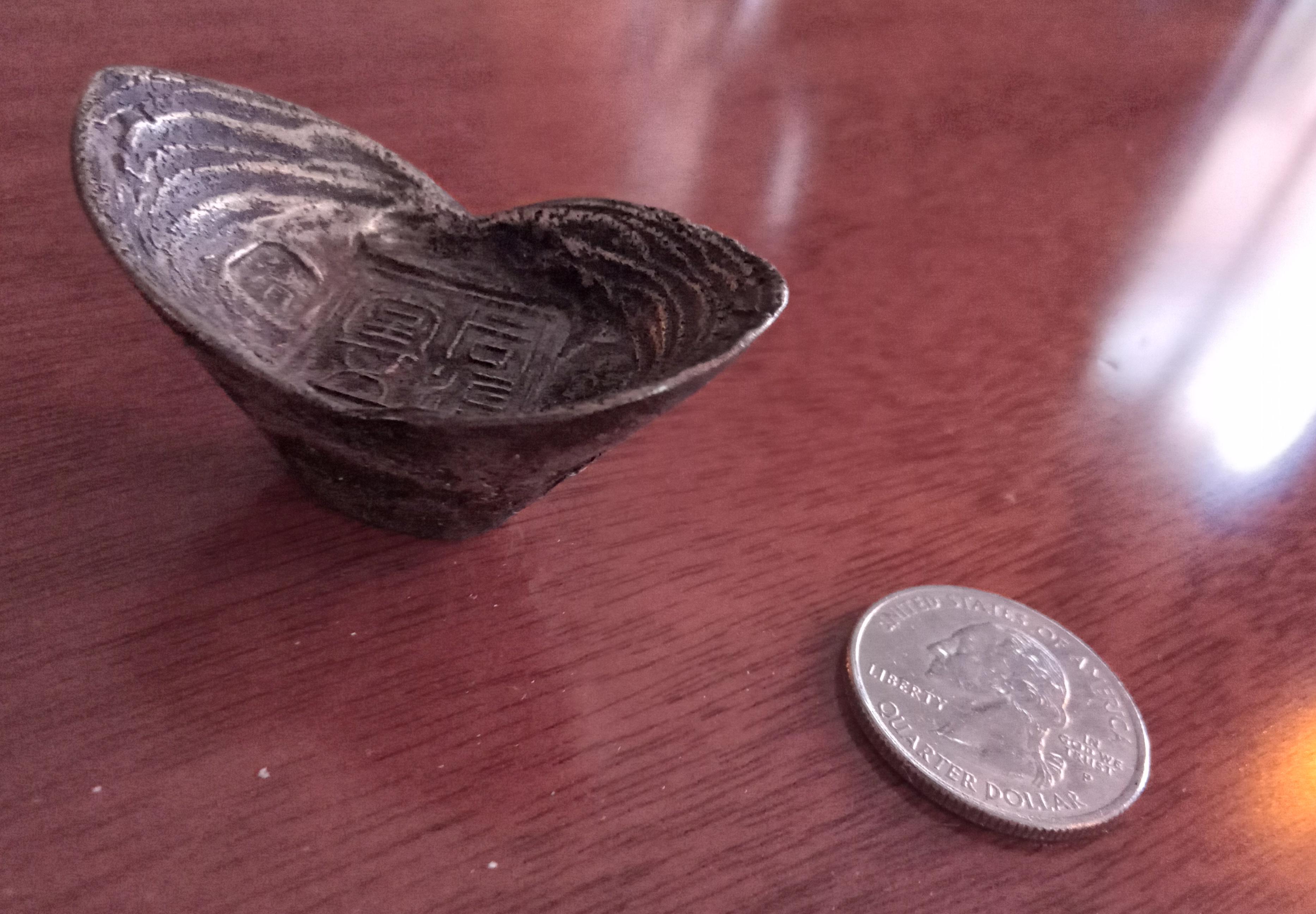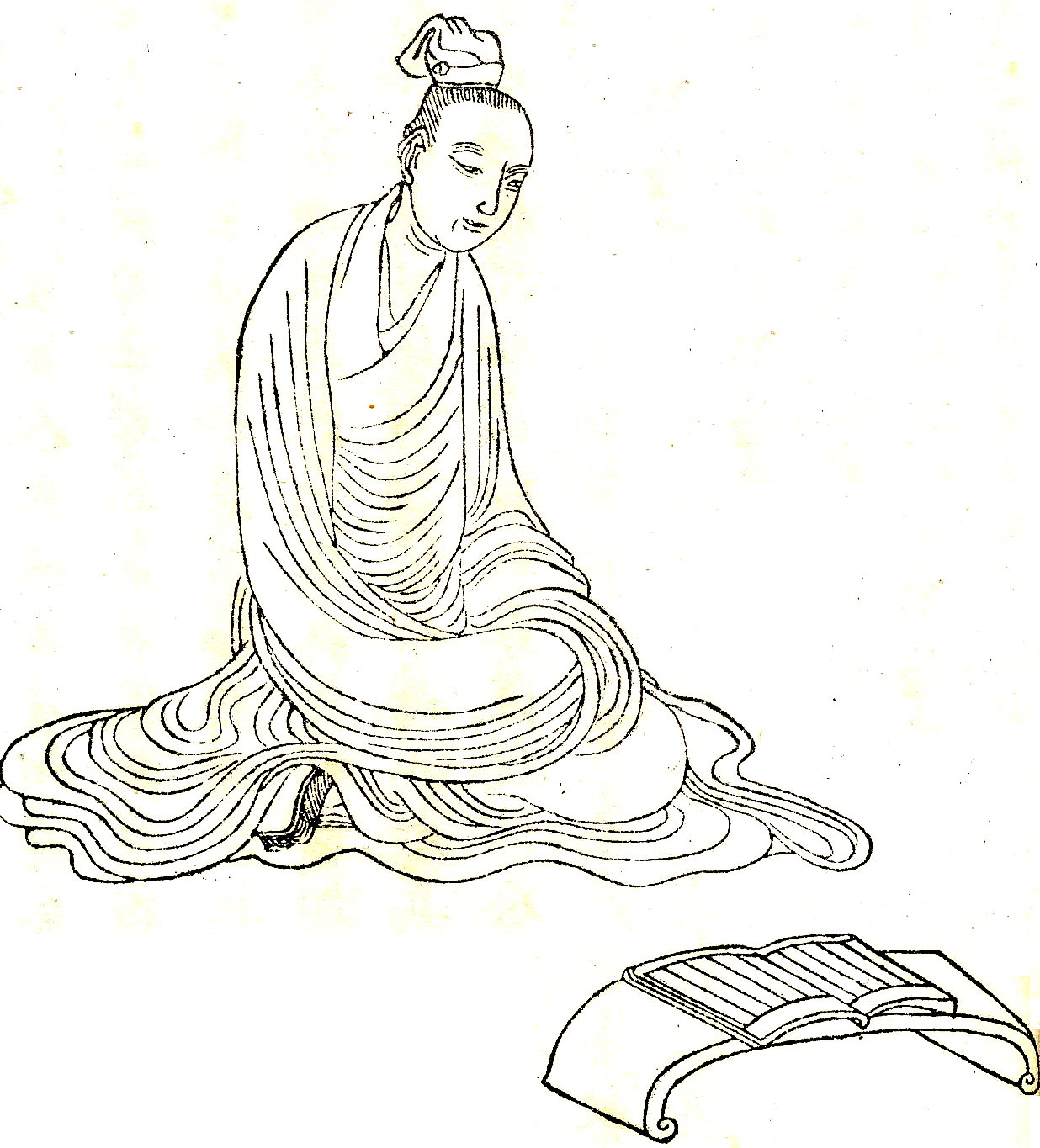|
Han Xin
Han Xin (; ? – early 196 BCE) was a Chinese military general and politician who served Liu Bang during the Chu–Han Contention and contributed greatly to the founding of the Han dynasty. Han Xin was named as one of the "Three Heroes of the early Han dynasty" ( zh, script=Hant, 漢初三傑), along with Zhang Liang and Xiao He. Han Xin is best remembered as one of the most brilliant military commanders in Chinese history, renowned for his exceptional strategic intellect and tactical mastery. His innovative use of deception, maneuver warfare, and battlefield psychology set new standards in military art, with several of his campaigns serving as textbook examples of effective command. Han Xin's application of warfare principles not only exemplified but at times expanded upon the teachings of ''The Art of War'', with some of his tactics giving rise to enduring Chinese idioms. Undefeated in every engagement he commanded, his victories were instrumental in the founding of the Han ... [...More Info...] [...Related Items...] OR: [Wikipedia] [Google] [Baidu] |
Han (Warring States)
Han was an ancient Chinese state during the Warring States period. Scholars frequently render the name as Hann to clearly distinguish it from China's later Han dynasty. It was located in central China (modern-day Shanxi and Henan) in a region south and east of Luoyang, the capital of the Eastern Zhou. It was ruled by aristocrats of the Ji ( 姬) family ancestral temple who rose to power as a ministerial family in the state of Jin, and whose power eventually eclipsed that of the Jin ruling house. The partition of Jin which resulted in the states of Han, Wei, and Zhao, marked the beginning of the Warring States period. The state of Han was small and located in a mountainous and unprofitable region. Its territory directly blocked the passage of the state of Qin into the North China Plain.. Although Han had attempted to reform its governance (notably under Chancellor Shen Buhai who improved state administration and strengthened its military ability) these reforms were not enoug ... [...More Info...] [...Related Items...] OR: [Wikipedia] [Google] [Baidu] |
Battle Of Gaixia
The Battle of Gaixia was a battle of annihilation during Early Imperial China, fought between the forces of Han under Liu Bang and Western Chu under Xiang Yu in December 203 BC. It was the final major battle of the Chu-Han Contention, a civil war period following the collapse of the Qin dynasty, which finally ended when Xiang Yu committed suicide after making a last stand by the west bank of Yangtze River at Wujiang. The victorious Liu Bang would ascend to the throne a few months after the battle, declaring himself Emperor of the newly established Han dynasty. Background In November 204 BC the Han General-in-Chief Han Xin defeated the Chu-Qi coalition in the Battle of Wei River, and in early 203 he completed the Han conquest of the State of Qi, an ally of Western Chu. For these reasons, the situation of Xiang Yu, the Hegemon-King of Western Chu, had become increasingly precarious. Since 205 he and Liu Bang, the King of Han, had worn each other down in a war of attrition ... [...More Info...] [...Related Items...] OR: [Wikipedia] [Google] [Baidu] |
Tael
Tael ( ),"Tael" entry at the . or liang, also known as the tahil and by other names, can refer to any one of several measures used in and . It usually refer ... [...More Info...] [...Related Items...] OR: [Wikipedia] [Google] [Baidu] |
Warring States
The Warring States period in Chinese history (221 BC) comprises the final two and a half centuries of the Zhou dynasty (256 BC), which were characterized by frequent warfare, bureaucratic and military reforms, and struggles for greater hegemonic influence among the various autonomous feudal states of the Eastern Zhou dynasty. It followed the Spring and Autumn period and concluded with the eventual unification of China by the western state of Qin under Qin Shi Huang, who conquered all other contender states by 221 BC and found the Qin dynasty, the first imperial dynasty in East Asian history. While scholars have identified several different dates as marking the beginning of the Warring States period, Sima Qian's choice of 475 BC, the first year of King Yuan of Zhou's reign, is the most often cited due to the paucity of preceding annals after the Qin Shi Huang's burning of books and burying of scholars. The Warring States era largely corresponds to the ... [...More Info...] [...Related Items...] OR: [Wikipedia] [Google] [Baidu] |
Chu (state)
Chu (, Old Chinese: ''*s-r̥aʔ'') was an Ancient Chinese states, ancient Chinese state during the Zhou dynasty. Their first ruler was King Wu of Chu in the early 8th century BC. Chu was located in the south of the Zhou heartland and lasted during the Spring and Autumn period. At the end of the Warring States period it was annexed by the Qin (state), Qin in 223 BC during the Qin's wars of unification. Also known as Jing () and Jingchu (), Chu included most of the present-day provinces of Hubei and Hunan, along with parts of Chongqing, Guizhou, Henan, Anhui, Jiangxi, Jiangsu, Zhejiang, and Shanghai. For more than 400 years, the Chu capital Danyang (Chu), Danyang was located at the junction of the Dan River (China), Dan and Xi Rivers near present-day Xichuan County, Henan, but later moved to Ying (Chu), Ying. The house of Chu originally bore the Chinese surname#Xing, ancestral temple surname Nai ( OC: /*rneːlʔ/) which was later written as Mi (surname), Mi ( OC: /*meʔ/). Th ... [...More Info...] [...Related Items...] OR: [Wikipedia] [Google] [Baidu] |
Jiangsu Province
Jiangsu is a coastal province in East China. It is one of the leading provinces in finance, education, technology, and tourism, with its capital in Nanjing. Jiangsu is the third smallest, but the fifth most populous, with a population of 84.75 million, and the most densely populated of the 22 provinces of the People's Republic of China. Jiangsu has the highest GDP per capita and second-highest GDP of Chinese provinces, after Guangdong. Jiangsu borders Shandong in the north, Anhui to the west, and Zhejiang and Shanghai to the south. Jiangsu has a coastline of over along the Yellow Sea, and the Yangtze flows through the southern part of the province. Since the Sui and Tang dynasties, Jiangsu has been a national economic and commercial center, partly due to the construction of the Grand Canal. Cities such as Nanjing, Suzhou, Wuxi, Changzhou, and Shanghai (separated from Jiangsu in 1927) are all major Chinese economic hubs. Since the initiation of economic reforms in 1990, J ... [...More Info...] [...Related Items...] OR: [Wikipedia] [Google] [Baidu] |
Guo Xu Album Dated 1503 (6)
"Guo", written in Chinese: 郭, is one of the most common Chinese surnames and means "the wall that surrounds a city" in Chinese. It can also be transliterated as Cok, Gou, Quo, Quach, Quek, Que, Keh, Kuo, Kwo, Kuoch, Kok, Koc, Kwee, Kwek, Kwik, Kwok, Kuok, Kuek, Gock, Koay, or Ker. The Korean equivalent is spelled Kwak; the Vietnamese equivalent is Quách. The different ways of spelling this surname indicate the origin of the family. For example, the Cantonese "Kwok" originated in Hong Kong and the surrounding area. In the Philippines, the spelling is "Que", "Ke", "Quepe", and "Kepa". In 2019, Guo was the 16th most common surname in mainland China. Origins There are eight legendary origins of the Guo surname, which include a Persian ( Hui) origin, a Korean origin, and a Mongolian origin, as a result of sinicization. However, the majority of people bearing the surname Guo are descended from the Han Chinese. Hui surname One of the Guo family is from the Hui clans around Q ... [...More Info...] [...Related Items...] OR: [Wikipedia] [Google] [Baidu] |
Empress Lü
Lü Zhi (241 BC – 18 August 180 BC), courtesy name E'xu (娥姁) and commonly known as Empress Lü () and formally Empress Gao of Han (), was the empress consort of Emperor Gaozu of Han, Gaozu, the founding emperor of the Han dynasty. They had two known children, Liu Ying (later Emperor Hui of Han) and Princess Yuan of Lu. Lü was the first woman to assume the title List of consorts of rulers of China, Empress of China and paramount power. After Gaozu's death, she was honoured as empress dowager and regent during the short reigns of Emperor Hui and his successors Emperor Qianshao of Han and Liu Hong (Emperor Houshao of Han, Emperor Houshao). She played a role in the rise and foundation of her husband, Emperor Gaozu, and his dynasty, and in some of the laws and customs laid down by him. Empress Lü, even in the absence of her husband from the capital, killed two prominent generals who played an important role in Gaozu's rise to power, namely Han Xin and Peng Yue, as a lesson f ... [...More Info...] [...Related Items...] OR: [Wikipedia] [Google] [Baidu] |
Chu Kingdom (Han Dynasty)
Chu () was a kingdom of China's Han dynasty, located in what is now northern Jiangsu and Anhui provinces. History During the Chu–Han Contention period, the Chu region centered in Pengcheng was the base of the Western Chu regime led by Xiang Yu. After Xiang's death, the Emperor Gaozu of Han first granted Chu to his general Han Xin. After Han was accused of plotting rebellion and executed, his territories was split into two parts. Liu Jiao, brother of the emperor, gained the title "King of Chu" and ruled over the land west of the Huai River, while the rest of Han Xin's territories eventually became the Wu Kingdom. Jiao's kingdom consisted of the commanderies of Xue, Pengcheng and Donghai. In 187 BC, Xue was split off to form the Lu Kingdom (魯國) for Zhang Yan (張偃), a grandson of the Empress Dowager Lü. The commandery was returned to Chu when the Lü clan was removed from power. In 154 BC, Chu under the King Liu Wu joined the Rebellion of the Seven States as one ... [...More Info...] [...Related Items...] OR: [Wikipedia] [Google] [Baidu] |
Qi Kingdom (Han Dynasty)
Qi () was a Chinese kingdom that existed from the Chu–Han Contention period to late 2nd century BC, located in present-day Shandong and some surrounding areas. History The kingdom was established on the former territories of the state of Qi (11th century BC – 221 BC), a great power during the Warring States period until its annexation by the Qin. In 206 BC, Xiang Yu divided the Qin empire into Eighteen Kingdoms. Three of them – Qi, Jiaodong and Jibei – were founded on Qi territories and were ruled by the former state's aristocrats. In 203 BC, the region was conquered by Han Xin, a prominent military general serving under Liu Bang, the later Emperor Gaozu of Han dynasty. Han Xin was briefly granted the title "King of Qi", but was later offered Chu instead. In 201 BC, Emperor Gaozu installed his eldest son Liu Fei as the King of Qi, known posthumously as King Daohui. According to an order by Emperor Gaozu, "All the people who are able to speak the language of Qi shall be g ... [...More Info...] [...Related Items...] OR: [Wikipedia] [Google] [Baidu] |
Xiao He
Xiao He (257 BC – 16 August 193 BC''xinwei'' day of the 7th month of the 2nd year of Emperor Hui's reign, per vol. 12 of ''Zizhi Tongjian'') was a Chinese calligrapher and politician of the early Western Han dynasty. He served Emperor Gaozu of Han, Liu Bang (Emperor Gao), the founder of the Han dynasty, during the insurrection against the Qin dynasty, and fought on Liu's side in the Chu–Han Contention against Liu's rival, Xiang Yu. After the founding of the Han dynasty, Xiao He became the Chancellor (China), chancellor and held office until his death. For his contributions, he is also known as one of the "Three Heroes of the early Han dynasty" (), along with Han Xin and Zhang Liang (Western Han), Zhang Liang. Early life Xiao He was born in Fengyi County, Sishui Commandery (present-day Feng County, Jiangsu, Feng County, Jiangsu). In his early days, he served as a ''gongcao'' (功曹; magistrate's secretary) in the administrative office of Pei County. He was studious, tactful a ... [...More Info...] [...Related Items...] OR: [Wikipedia] [Google] [Baidu] |
Zhang Liang (Western Han)
:''Note: In this article, to distinguish between the Han state of the Warring States period and the Han dynasty, the former is referred to as "Hán" while "Han" is reserved for the latter.'' Zhang Liang ( 251 BC – 189 BC), courtesy name Zifang, was a Chinese military strategist and politician who lived in the early Western Han dynasty. He is also known as one of the "Three Heroes of the early Han dynasty" (), along with Han Xin () and Xiao He. Zhang Liang contributed greatly to the establishment of the Han dynasty. After his death, he was honoured with the posthumous title "Marquis Wencheng" by Emperor Qianshao. Zhang Liang is depicted in the Wu Shuang Pu (無雙譜, Table of Peerless Heroes) by Jin Guliang. Early life Zhang Liang was born in Xinzheng (新鄭; present-day Zhengzhou, Henan), the capital of the Hán state (), while his ancestral home was in Chengfu (城父; present-day Chengfu Town, Bozhou, Anhui). He descended from an aristocrat family in Hán. His grandfa ... [...More Info...] [...Related Items...] OR: [Wikipedia] [Google] [Baidu] |






